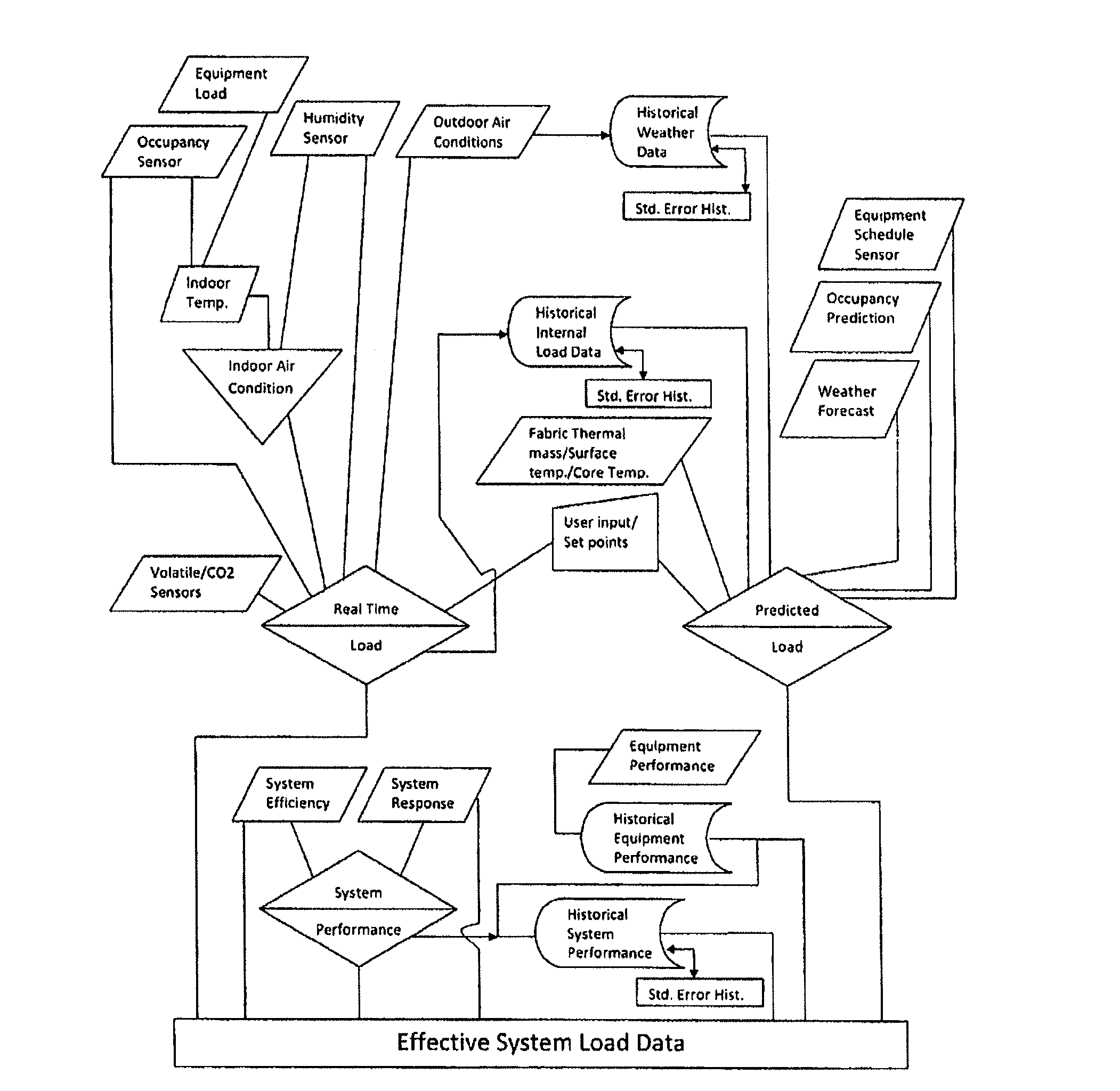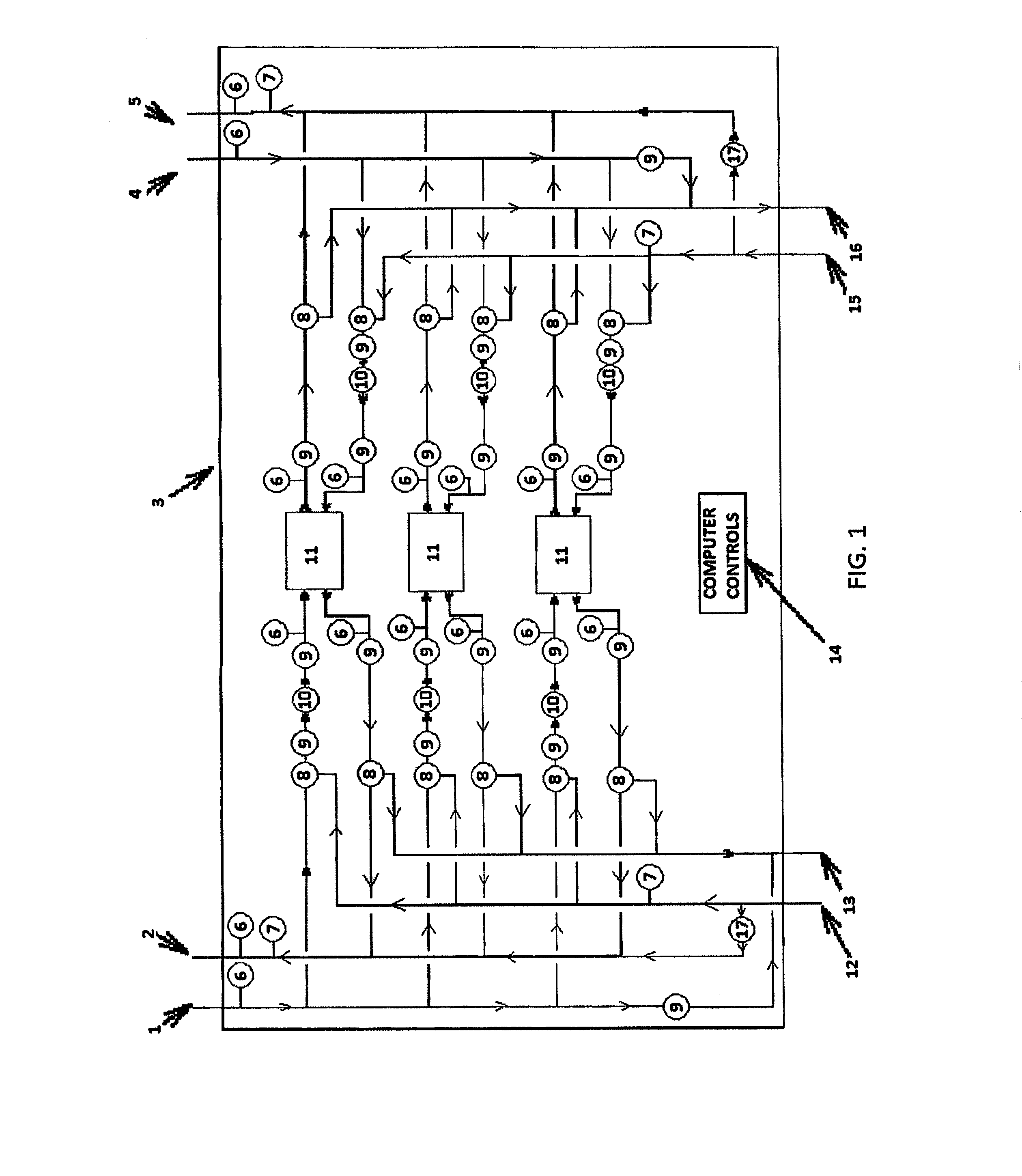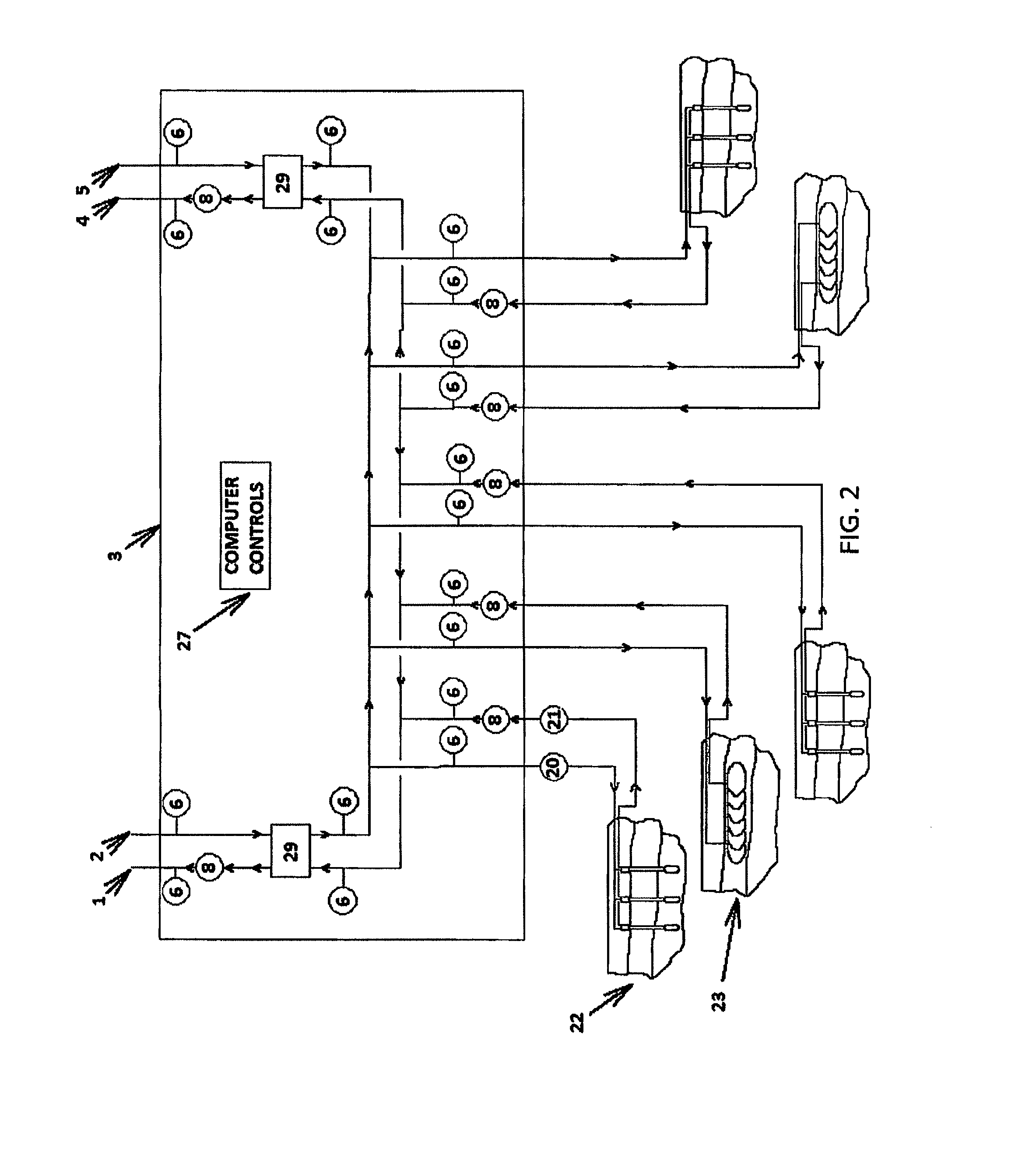Energy chassis and energy exchange device
a technology of energy chassis and energy exchange device, which is applied in the direction of heat storage plants, ac network voltage adjustment, domestic heating details, etc., to achieve the effect of simplifying the design and construction of the building energy system, efficient meeting building energy requirements, and increasing the efficiency of building heating and cooling systems
- Summary
- Abstract
- Description
- Claims
- Application Information
AI Technical Summary
Benefits of technology
Problems solved by technology
Method used
Image
Examples
Embodiment Construction
[0060]Before explaining the disclosed embodiments of the present invention in detail it is to be understood that the invention is not limited in its application to the details of the particular arrangements shown since the invention is capable of other embodiments. Also, the terminology used herein is for the purpose of description and not of limitation.
[0061]The following is a list of reference numerals used in the description and the drawings to identify components:
1hot fluid return2hot fluid source3energy chassis4cold fluid return5cold fluid source6temp. indicator and sensor7flow meter8three-way control valve9isolation valve10variable volume circulation pump11fluid-to-fluid refrigeration-based heat pump12supply from “warm” side of energy exchange device13return connection to “warm” side of energy exchange device14computer-based control system15supply connection from “cool” side of energy exchange device16return connection to “cool” side of energy exchange device17variable volume ...
PUM
 Login to View More
Login to View More Abstract
Description
Claims
Application Information
 Login to View More
Login to View More - R&D
- Intellectual Property
- Life Sciences
- Materials
- Tech Scout
- Unparalleled Data Quality
- Higher Quality Content
- 60% Fewer Hallucinations
Browse by: Latest US Patents, China's latest patents, Technical Efficacy Thesaurus, Application Domain, Technology Topic, Popular Technical Reports.
© 2025 PatSnap. All rights reserved.Legal|Privacy policy|Modern Slavery Act Transparency Statement|Sitemap|About US| Contact US: help@patsnap.com



